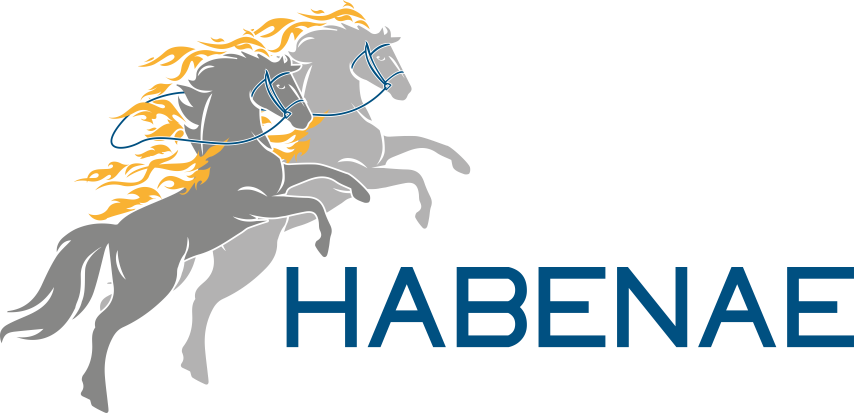Understanding RevOps
Revenue operations (RevOps) represents an integrated approach that brings together sales, marketing, and customer success functions under a unified framework. This alignment is crucial in today’s business environment, where the seamless interaction between these departments can significantly influence overall performance and growth. The primary objective of RevOps is to eliminate operational silos, fostering a collaborative environment where all teams are focused on shared revenue goals.
By integrating these functions, RevOps enhances organisational visibility and ensures that each team works in concert toward the company’s strategic objectives. This alignment enables a more coherent strategy execution, allowing businesses to respond more agilely to market dynamics. In a landscape where data-driven decision-making is pivotal, RevOps provides the analytical foundation necessary for these decisions. It leverages sophisticated analytics to offer real-time insights, which are essential for adjusting strategies promptly and effectively.
One of the significant benefits of RevOps is the streamlined processes that result from this alignment. When sales, marketing, and customer success teams operate in harmony, it reduces inefficiencies and redundancies. For example, marketing initiatives can be better targeted, ensuring that sales teams receive higher-quality leads. Consequently, this enhances the efficiency of sales cycles and increases the probability of closing deals. RevOps also facilitates a unified customer experience, which is crucial for customer satisfaction and loyalty.
Moreover, the comprehensive approach of RevOps ensures that customer success teams are well-integrated into the revenue generation framework. This integration is crucial for sustaining long-term customer relationships and fostering renewals and referrals. By prioritising customer success, companies can ensure that the value promised during the sales process is consistently delivered, fostering trust and loyalty.
In essence, RevOps provides a strategic advantage by optimising the alignment between key revenue-driving departments. This integrated framework not only drives growth but also enhances operational efficiency, enabling companies to adapt swiftly to evolving market conditions. With its focus on data-driven strategies and cross-functional collaboration, RevOps emerges as a crucial component for businesses seeking to achieve sustainable growth and a competitive edge.

Components of RevOps
RevOps comprises several critical components, each contributing to a cohesive strategy designed to drive growth.
- Demand Generation: This component focuses on attracting ideal client profiles (ICPs) by leveraging data-driven marketing strategies. When sales and marketing are aligned, companies can more effectively target their ICPs, resulting in higher-quality leads and more efficient resource allocation. Notably, 79% of sales professionals report that their CRM significantly improves their sales and marketing alignment.
- Pipeline Management: Efficient pipeline management is about converting initial conversations into revenue. It involves nurturing leads, managing opportunities, and ensuring that the sales process is as seamless as possible. With RevOps, companies can better forecast and adjust their strategies in real-time, increasing the likelihood of closing deals.
- Customer Success: Ensuring successful onboarding and ongoing support is critical to customer retention and loyalty. RevOps facilitates a consistent and comprehensive approach to customer success, ensuring that clients receive the value promised, which in turn drives renewals and referrals.
- Data Integration and Analytics: Centralising data from various departments provides comprehensive insights that drive informed decision-making. By leveraging advanced analytics, companies can identify trends and adjust strategies promptly, ensuring a data-driven approach to achieving revenue goals. This integration not only enhances visibility but also enables teams to make more strategic decisions.
- Process Optimisation: Streamlining and automating workflows across departments minimises inefficiencies and reduces manual tasks. Process optimisation ensures that all teams are working with the best tools and practices, thereby enhancing overall productivity and enabling scalable growth. Implementing automated solutions allows teams to focus more on strategic initiatives rather than being bogged down by routine tasks.
Each component of RevOps plays a crucial role in creating a unified strategy that aligns sales, marketing, and customer success, ultimately driving growth and operational efficiency.
Problems We Solve
RevOps tackles several prevalent challenges in business operations:
- Weak Growth and Poor Execution: Many companies encounter stagnant growth and subpar execution of their strategies. By employing RevOps, businesses can better align their operations, resulting in more strategic decision-making and improved overall performance.
- Misaligned Sales and Marketing: Disjointed sales and marketing efforts can result in targeting the wrong ICPs and missing out on valuable opportunities. RevOps addresses this issue by fostering a unified strategy across departments, ultimately helping sales teams close more deals, as experienced by 22.1% of salespeople.
- Inefficient Pipeline Management: A fragmented approach to pipeline management can hinder the conversion of leads into revenue. RevOps streamlines this process, ensuring that leads are effectively nurtured and managed through a cohesive strategy, which increases the chances of closing deals.
- Lack of Data Integration: Without centralised data, companies struggle to make informed decisions. RevOps integrates data across departments, offering comprehensive insights that drive more informed and timely decision-making. This level of integration is crucial for adapting to market changes and staying competitive.
- Poor Customer Retention: A lack of coordinated effort in customer success can result in poor retention and decreased loyalty. RevOps ensures that customer success is a priority, facilitating seamless onboarding and ongoing support, which drives renewals and referrals.
- Operational Inefficiencies: Inefficiencies and manual tasks can hinder productivity. RevOps focuses on process optimisation, streamlining workflows, and automating repetitive tasks. This enables teams to focus on strategic initiatives, thereby enhancing overall productivity and supporting scalable growth.

Customer Success Stories
Real-world success stories exemplify the transformative power of RevOps:
- Performance Gains with better enablement: Organisations that leverage comprehensive sales enablement programs see significant benefits. For instance, companies with robust sales enablement initiatives achieve a 49% win rate on forecasted deals. This highlights the importance of aligning sales tools and strategies with business objectives.
- Revitalising Revenue Operations for Increased Effectiveness: By adopting a RevOps framework, businesses can revitalise their revenue operations, leading to enhanced effectiveness and efficiency. Companies have reported improved revenue growth and streamlined operations as a direct result of implementing tailored Revenue Operations (RevOps) strategies.
RevOps Resources
Successfully implementing RevOps requires understanding its core components and strategies, with numerous resources available to assist businesses.
- Blogs and Articles: Industry blogs cover topics like demand generation and customer success, offering practical advice and real-world examples.
- Webinars and Online Courses: These offer interactive learning on RevOps principles, often led by experts who provide insights and answer questions.
- Whitepapers and E-books: Comprehensive guides on RevOps, including data integration and process optimisation, offering detailed explanations and steps.
- Industry Reports and Surveys: Offer valuable insights into current trends and statistics, enabling businesses to make informed decisions.
- Consulting Services: Experts can offer tailored solutions, conduct audits, and develop strategies to align sales, marketing, and customer success teams.
- Tech Stack: Essential for effective RevOps, these tools streamline processes and provide real-time analytics, supporting departmental alignment.
- Peer Communities: Engaging with peers in forums and networks can provide additional support, insights, and shared experiences.
Leveraging these resources enables businesses to refine their RevOps strategies, driving growth and achieving efficient revenue operations.
Five Benefits of Implementing Revenue Operations
- Enhanced Team Collaboration: Breaks down silos between sales, marketing, and customer success, promoting alignment and shared accountability.
- Improved Operational Efficiency: Streamlines workflows, automates repetitive tasks, and integrates tools to reduce friction and focus on high-value activities.
- Data-Driven Decision Making: Provides a centralized view of performance metrics for better planning, trend identification, and strategic choices.
- Sustainable Revenue Growth: Aligns revenue-generating teams to create a cohesive strategy, ensuring consistent and predictable revenue performance.
- Enhanced Customer Experience: Facilitates personalised engagement and seamless interactions, leading to stronger relationships and increased customer satisfaction.
Let’s Continue the Conversation
Let’s connect if you’re exploring how Revenue Operations Consulting can unlock growth for your business or want to discuss how to align your sales, marketing, and customer success teams more effectively. I regularly share insights, strategies, and success stories around RevOps and business growth. Connect with me on LinkedIn to stay in the loop and start a conversation.
